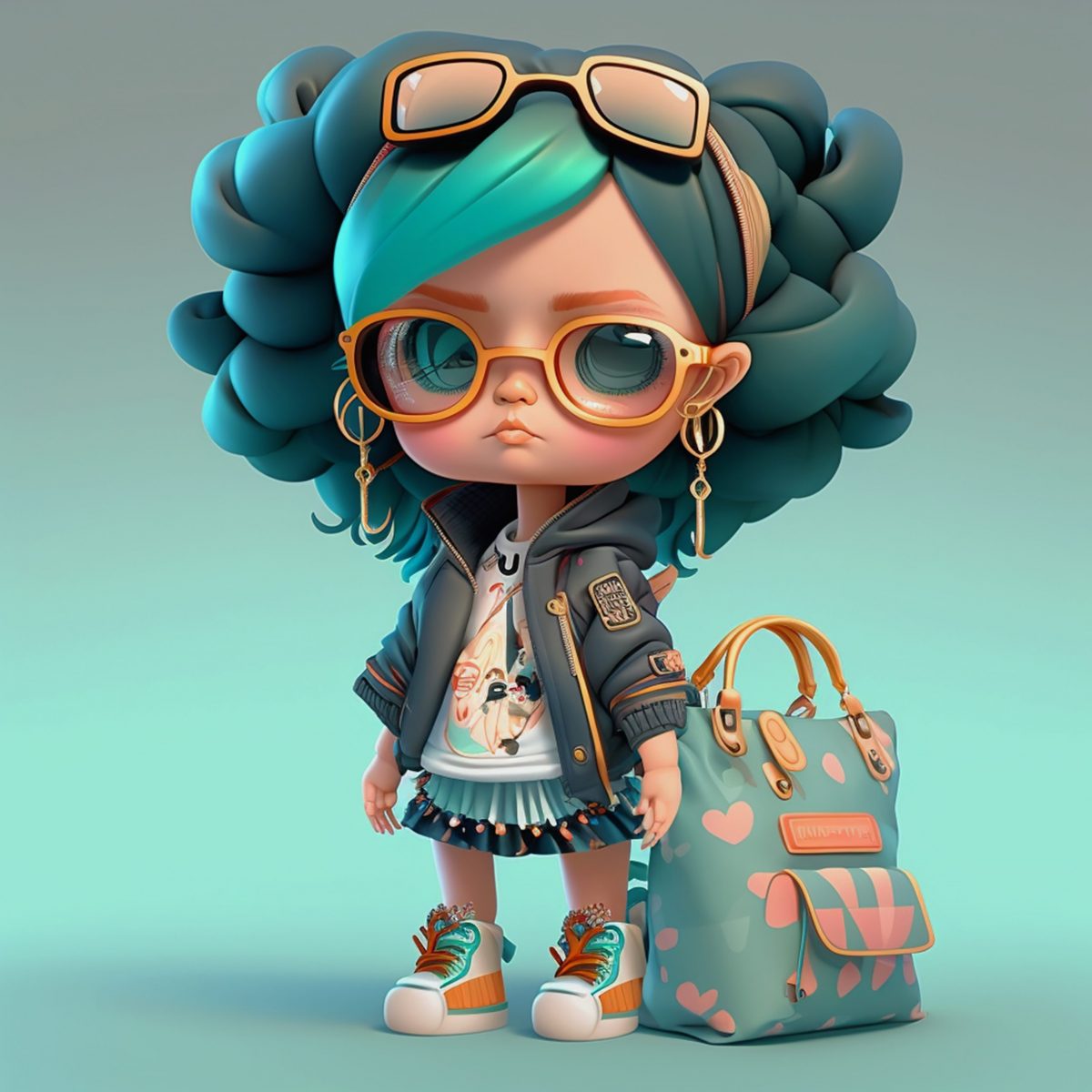
Outline:
- Introduction
- What are 3D Models?
- Definition and Explanation
- Use in Gaming
- The Impact of 3D Models on Gaming Experience
- Immersive Environments
- Realistic Characters and Objects
- Enhanced Gameplay Mechanics
- Creating and Integrating 3D Models into Games
- 3D Modeling Software
- Texturing and Animation
- Implementing 3D Models in Games
- Advancements in 3D Modeling Technology
- Photorealism and VR Integration
- Procedural Generation
- Benefits of 3D Models in Gaming
- Visual Appeal
- Player Engagement
- Increased Accessibility
- Challenges and Limitations
- Hardware Requirements
- Development Time and Costs
- Artistic and Technical Skillset
- Popular Games Utilizing 3D Models
- The Future of 3D Models in Gaming
- Conclusion
- FAQs
- What are 3D models?
- How do 3D models enhance gaming experiences?
- What software is used to create 3D models?
- Are 3D models resource-intensive for gaming systems?
- Can 3D models be used in virtual reality games?
Enhance Your Gaming Experience with 3D Models
Introduction
Gaming has evolved significantly over the years, from simple 2D sprites to complex 3D worlds that captivate players with stunning visuals and immersive gameplay. One crucial element contributing to this transformation is the use of 3D models. In this article, we will explore the role of 3D models in gaming, their impact on the gaming experience, and how they have revolutionized the industry.
What are 3D Models?
Definition and Explanation
3D models are virtual representations of objects or characters created using specialized computer software. Unlike 2D images, 3D models possess depth, allowing them to appear lifelike and tangible within the gaming environment.
Use in Gaming
3D models have become the backbone of modern gaming. They are used to design characters, environments, props, and everything else that players interact with during gameplay. The adoption of 3D models has paved the way for revolutionary gaming experiences.
The Impact of 3D Models on Gaming Experience
Immersive Environments
Thanks to 3D models, game developers can construct expansive and realistic virtual worlds. Players are no longer restricted to flat landscapes; instead, they can explore intricate, multi-dimensional environments that draw them deeper into the game’s narrative.
Realistic Characters and Objects
Gone are the days of pixelated characters. 3D models enable the creation of lifelike characters with intricate details, fluid animations, and facial expressions that mimic human emotions. This realism enhances player connections with in-game characters, making the gaming experience more emotionally engaging.
Enhanced Gameplay Mechanics
3D models not only enrich visual aesthetics but also impact gameplay mechanics. With realistic physics and interactions, players can experience a more immersive and interactive gaming experience. This includes everything from the way characters move and interact with objects to how the in-game environment responds to player actions.
Creating and Integrating 3D Models into Games
3D Modeling Software
To create 3D models, game developers use specialized software such as Blender, Autodesk Maya, or ZBrush. These tools offer a wide range of features to design and sculpt intricate models with high precision.
Texturing and Animation
After modeling, textures and animations are added to the 3D models to give them life. Texturing involves applying colors, patterns, and details to the models, while animations bring movements and expressions to characters and objects.
Implementing 3D Models in Games
Once the 3D models are ready, they are integrated into the game engine. The game engine renders and displays the 3D models in real-time, allowing players to interact with them seamlessly.
Advancements in 3D Modeling Technology
Photorealism and VR Integration
The advancements in 3D modeling technology have led to the achievement of photorealistic graphics. Games can now mimic real-world visuals to a remarkable degree, blurring the line between reality and the virtual realm. Additionally, the integration of 3D models with virtual reality (VR) technology has unlocked entirely new dimensions of immersion for players.
Procedural Generation
Procedural generation is another breakthrough in 3D modeling. It allows developers to create vast and diverse game worlds automatically. By using algorithms and mathematical formulas, developers can generate landscapes, buildings, and even entire ecosystems with minimal manual effort.
Benefits of 3D Models in Gaming
Visual Appeal
3D models significantly enhance the visual appeal of games. High-quality graphics and detailed environments contribute to a more enjoyable gaming experience.
Player Engagement
Engaging gameplay and realistic visuals keep players invested in the gaming experience for longer periods. This increased engagement fosters a sense of satisfaction and encourages players to return to the game repeatedly.
Increased Accessibility
The introduction of 3D models has also made gaming more accessible to a broader audience. Engaging visuals and realistic characters appeal to both casual and hardcore gamers, bridging the gap between different player demographics.
Challenges and Limitations
Hardware Requirements
The use of 3D models can demand higher hardware specifications. Players may need powerful gaming systems to run games smoothly with advanced 3D graphics.
Development Time and Costs
Creating detailed 3D models and animations can be time-consuming and costly. Game developers need to balance the level of detail with development resources to avoid excessive production time and budget overruns.
Artistic and Technical Skillset
Designing exceptional 3D models requires a blend of artistic talent and technical expertise. Game development teams must consist of skilled artists and technicians to create captivating 3D assets.
Popular Games Utilizing 3D Models
Numerous popular games leverage the power of 3D models to deliver captivating gaming experiences. Titles like “The Witcher 3: Wild Hunt,” “Red Dead Redemption 2,” and “Fortnite” have set new benchmarks for graphical fidelity and gameplay immersion.
The Future of 3D Models in Gaming
The future of 3D models in gaming is promising. As technology continues to advance, we can expect even more realistic graphics, faster rendering times, and further integration with emerging technologies like augmented reality (AR) and holographic gaming.
Conclusion
In conclusion, 3D models have transformed the gaming industry by elevating the visual quality and interactivity of games. With their ability to create immersive environments, lifelike characters, and engaging gameplay, 3D models have become an indispensable part of modern gaming. As technology progresses, we can anticipate even more exciting and immersive gaming experiences in the years to come.
FAQs
- What are 3D models?
- 3D models are virtual representations of objects or characters created using specialized computer software to appear lifelike and tangible within the gaming environment.
- How do 3D models enhance gaming experiences?
- 3D models enhance gaming experiences through immersive environments, realistic characters, and enhanced gameplay mechanics.
- What software is used to create 3D models?
- 3D models are created using specialized software like Blender, Autodesk Maya, or ZBrush.
- Are 3D models resource-intensive for gaming systems?
- Yes, 3D models can demand higher hardware specifications, requiring powerful gaming systems to run games smoothly with advanced 3D graphics.
- Can 3D models be used in virtual reality games?
- Yes, 3D models are integral to virtual reality games, enhancing the overall immersive experience for players.


















Leave a Comment